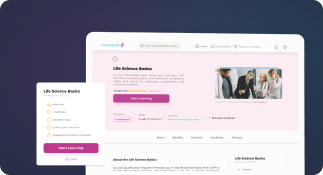Quality Risk Management (QRM)
Definition
Quality Risk Management (QRM) is a systematic process for the assessment, control, communication, and review of risks to the quality of a pharmaceutical product across its lifecycle. It ensures that decisions related to quality are based on scientific knowledge and ultimately protect the patient.
Detailed Explanation
In the pharmaceutical and life sciences industry, Quality Risk Management (QRM) plays a critical role in ensuring the safety, efficacy, and quality of medicinal products. It is a foundational component of Good Manufacturing Practice (GMP) and is emphasized in guidelines such as ICH Q9, which outlines principles and examples of QRM applicable to all aspects of pharmaceutical quality.
Purpose and Importance of QRM
The primary purpose of QRM is to identify potential risks to product quality and implement strategies to mitigate those risks. This process supports compliance with regulatory expectations, enhances product consistency, and improves decision-making throughout the product lifecycle.
QRM is important because it:
- Enhances patient safety by proactively addressing quality issues.
- Supports efficient resource allocation by focusing efforts on high-risk areas.
- Improves communication and transparency across departments and stakeholders.
- Facilitates continuous improvement and lifecycle management.
Key Components of QRM
Quality Risk Management involves several key components:
- Risk Assessment: Identifying hazards, analyzing and evaluating risks associated with exposure to those hazards.
- Risk Control: Deciding whether risks are acceptable and implementing measures to reduce or eliminate them.
- Risk Communication: Sharing risk-related information among stakeholders.
- Risk Review: Monitoring and reviewing risks over time to ensure controls remain effective.
Common QRM Tools
Several tools are commonly used in QRM to facilitate structured analysis and decision-making:
- Failure Mode and Effects Analysis (FMEA)
- Hazard Analysis and Critical Control Points (HACCP)
- Fault Tree Analysis (FTA)
- Risk Ranking and Filtering
- Preliminary Hazard Analysis (PHA)
Applications in the Pharmaceutical Industry
QRM is applied throughout the pharmaceutical product lifecycle, including:
- Development: Assessing formulation and process risks early in product development.
- Manufacturing: Evaluating risks in production processes, equipment, and facilities.
- Quality Control: Determining the extent of testing and sampling based on risk.
- Regulatory Submissions: Supporting justification of control strategies and specifications.
- Post-Market Surveillance: Managing risks identified through complaints or adverse event reports.
Example Scenario
Consider a pharmaceutical company developing a sterile injectable drug. During risk assessment, the team identifies potential microbial contamination as a critical quality risk. Using FMEA, they determine that the highest risk arises from improper sterilization equipment maintenance. As a result, they implement enhanced preventive maintenance schedules, operator training, and real-time monitoring—demonstrating effective QRM in action.
Regulatory Expectations and Guidance
Regulatory agencies worldwide expect pharmaceutical companies to implement QRM as part of their quality systems. The ICH Q9 guideline is the primary global reference for QRM principles. Additionally, the FDA and EMA have integrated QRM into their GMP frameworks and inspectional expectations.



